Tourist information offices in Siena
Tourism in Siena is managed by several entities, including local administrative authorities (e.g. Commune di Siena) and private tourist-oriented organizations. They are trusted institutions you can turn to if in need to get directions to whatever attractions, learn about transport means, guided tours or find details about ongoing events.
APT Siena is directly involved in the development and promotion of tourism in the province of Siena. It provides extensive information on all things pertaining to tourism in Siena. It is headquartered in Siena (Via dei Termini, 6), and its information office, working directly with tourists, is in Piazza del Campo.
The involvement of the organization in the promotion of tourism in the province of Siena is also proven by a special product it makes available: the so-called Terre di Siena Card. This is a useful tourist tool that allows visitors to keep posted with latest information related to local tourism and enjoy substantial advantages (discounts to events or admission to attractions).

Commune di Siena tourist information office
This is the information office managed by Commune di Siena. It provides information on the attractions on the public network, as well as ideas about how to spend a vacation in Siena.
Centro Guide Turistiche Siena e Provincia
This is the only tour agency in Siena authorized to offer guided tour services to visitors both in Siena and in its surroundings. It is a helpful vacation partner if you want to spend your stay in Siena both efficiently and pleasantly.
Explore Siena
Tourist information.
The city of Siena is rich in tourist offers and proposals. Every year we organize over 600 events and there are many routes and entertainment: tourism in Siena has many faces, discover them together.
HISTORICAL AND CULTURAL TOURISM
Siena is the city of art, history and culture. Like Florence, has an Etruscan past, Roman, Renaissance and Gothic. The palaces, churches and squares of the old town bear witness to this glorious past with their monuments and finished facades.
Many museums, both in the city center than in the hilly district, between small towns and villages scattered inland Tuscany. In a cultural visit in Siena you can not miss historic sites such as Piazza del Campo with its Fonte Gaia and Torre del Mangia, the imposing Cathedral, the Sanctuary of Santa Caterina, the Basilica of San Domenico, Palazzo Pubblico, the Museo dell ‘ Opera, and many others.
Stop in Siena for more than one day will allow you to discover the most of its surroundings, knowing beautiful villages rich in history, such as San Gimignano, Castellina in Chianti, Montalcino, Castelnuovo Berardenga, Gaiole in Chianti, Radda in Chianti, Chianciano Terme.
SPA TOURISM
Immersed in a unique natural setting, here you will find many spas that make the Sienese a land of the healing water. There is plenty of choice if you want to create a spa weekend in Siena: Chianciano Terme, Terme di San Filippo, Petriolo Spa, Terme di Montepulciano, Rapolano Terme, Bagno Vignoni, are just some of the offerings from the spa resort area .
FOOD AND WINE TOURISM
Wine bars, shops and restaurants of the old town offer the best of local produce. To better enjoy these delicacies you can visit the wine cellars of the district. In Siena you absolutely must try these dishes: pappardelle with wild boar, ribollita (vegetable soup), Tuscan bread toasted, Pici (homemade spaghetti), the gingerbread (sweet Tuscan Christmas), Chianina meat and of course the wines such as Chianti, Rosso di Montalcino, Brunello and Nobile di Montepulciano. The Siena is also the land of truffles, as in the case of San Giovanni d’Asso.
PLAY AND TOURISM
A lot of the fun and medieval pageants festivals that are held every year. Besides the historical Palio di Siena (held on July 2 and August 16), other famous festivals are the Barbarossa Feast of San Quirico d’Orcia, the Giostra di Simone Montisi, the Thrush Festival of Montalcino, the Joust del Saracino in Sarteano, the barrel race through the Montepulciano. Some parties also provide for the participation of children, with play areas for them. During the carnival celebrations, Christmas or Easter, all the villages come alive with events and celebrations. Very sensitive on fun are also hotels, farms and in general all the premises of the Sienese, who organize regular events and parties.
NATURE TOURISM
The hilly surrounding area lends itself well to hiking, running, horseback or bicycle. Ideal to get around with the kids, Siena is a city devoted to green tourism. Famous the Nature Train, the oldest steam train re-operated specifically to encourage a slow tourism, that winds through nature trails and unusual (info and reservations tel. 0577 281834).
If you love nature I recommend a nature tour in the following areas: Chianti, Crete Senesi, Monte Amiata, the Val di Chiana, Val d’Elsa, Val di Merse. Up the ancient waterway from Petriolo to Iesa and discover the Valley of the Farma, take a bath in one of its free thermal baths. Visit the Chianti region, in the area of Villa Arceno, with the castle of Montalto and its pond in the English style. Visit the “biancane” Leonina, the protected area of the Sienese clay hill.
Take a tour of the villages of Molli, Simignano and Gallena, including chestnut and marble quarries. Finally do a walking tour to Mount Amiata, to see Castelnuovo dell’Abate, in the highest Sienese top.
USEFUL NUMBERS
- Tourist Information Office of the City of Siena Via Rail Station (Piazzale Rosselli) Siena +39 0577 270600- +39 0577 292111 [email protected] – www.comune.siena.it
- Information and tourism services +39 0577 280551 www.terresiena.it – [email protected]
- Nature Train +39 0577 207413 www.ferrovieturistiche.it http://trenonatura.terresiena.it/trenonatura2010/treno-vapore.html
- Association Center Guides of Siena and Province +39 0577 43273 www.guidesiena.it – [email protected]
- Reservations and purchase of tickets for concerts and theater performances +39 0577 41169 www.b-ticket.com/b-ticket/sienateatri
- Tour Guides +39 0577 43273 http://guidesiena.it
- Information and reservations for disabled +39 0577 292215
- URP (Public Relations Office of the City of Siena) Piazza del Campo, 7-53100 Siena Phone 800 292 292 Tel. 0577 292230 292340-292334 Fax. 0577 292494 – [email protected]
- Azienda Ospedaliera Universitaria Senese Policlino “Santa Maria alle Scotte” Emergency Room 0577 585807 info Office 0577 585689 – 0577 585137
Questo sito utilizza cookie propri e/o di terze parti per analisi statistiche e per migliorare l’interazione con le piattaforme social media. – Per maggiori informazioni potete consultare la nostra cookie policy. Cliccando in un punto qualsiasi dello schermo, scorrendo la pagina o chiudendo questo messaggio, lei acconsente all’uso di tutti i cookie per le finalità indicate.
Siena travel guide
Up-to-date information on what to see and do in siena.
The Siena travel kit contains information to help you plan your visit to one of Italy’s most beloved destinations. The city of the Palio boasts an enchanting medieval atmosphere that pervades every Contrada with its palaces, noble residences, museums, religious buildings, gardens, workshops and taverns . What’s beyond the most iconic places? Find out with us.
Find out all the information about the city of Siena.

Risorgimento Hall
A room in Siena’s Palazzo Pubblico commemorates the first king of unified Italy. Although Siena is a city with strong

Fortezza Medicea of Siena
Built, destroyed and rebuilt, the Fortezza Medicea has lived through both military and civil events from the 16th century to

What is Siena famous for?
Check out the top attractions and all the unmissable experiences Siena deserves to be visited thoroughly because every corner is

Basilica dei Servi
A place of history and sacred art in the historic centre of Siena. The full name of the basilica is

Botanical Gardens
A green valley within the walls of the city of Siena. The gardens are located near Porta Tufi and are

The woman at the window in via Orbachi
The naked lady in Via dei Rossi in Siena. It’s not uncommon to come across curious and singular works in
MUNICIPALITY OF SIENA
Culture and Tourism Directorate Piazza Il Campo, 1 – 53100 Siena (SI)
MUNICIPALITY OF SIENA Culture and Tourism Directorate Piazza Il Campo, 1 – 53100 Siena (SI)

- Privacy Policy
- Cookie Policy
- Accessibility
Powered By Daruma® | All Rights Reserved
Useful tips, places to see, things to do, things to try.
Siena trip planner
A vacation guide to the gorgeous, gothic tuscan hilltown of siena.
- Simply strolling the medieval streets and relaxing on the Campo
- The cathedral complex packed with Gothic and Renaissance art
- Italy's greatest medieval secular frecoes in the Palazzo Pubblico
- The vineyards of the Chianti at your doorstep
- Cooking classes, a wine museum, the Palio horse race and other Sienese experiences
Siena is a city in hilltown clothing.
Spinning out from the sunny central Piazza del Campo , Siena's Gothic brick palazzi and marble Baroque church facades are splayed along three ridges crested by a trio of car-free boulevards: bustling shopping drag Via Banchi di Sopra, touristy Via di Città, and quiet Via Banchi di Sotto.
Tucked along its steep side-streets are a magnificent zebra-striped cathedral , buildings filled with medeival frescoes , cool and shadowy churches , and a cityscape virtually unchanged since the late Middle Ages.
This is thanks, sadly, to the fact that the Black Death wiped out 60% of the Siena-area population in 1348 (in the city itself, the mortality rate was closer to 84%). That medieval suffering helped preserve much of the city in its 14th century state, as Siena never quite recovered its former power, glory, and riches—and therefore never underwent Renaissance or baroque overhaulas did Florence and other neighbors and rivals.
Tips & useful links
Siena tourist information office Piazza del Campo 56 tel . +39-0577-280-551 Terresiena.it Also useful: Museisenesi.org Comune.siena.it Sienaonline.it (private) Sienafree.it (private)
Planning your time in Siena: Though you can see a few of its greatest hits in just half a day, Siena really deserves at least one good, full day.
In fact, Siena's riches of sights really make it hard to do in a single day, so you're better off spending the night here —that way, you can squeeze in some sightseeing on the first afternoon, and some more on the second morning.
Couple that fact with Siena's central location in Tuscany, and it makes a lot of sense for Siena to be one of the overnight stops on your tour of Tuscan hilltowns.
- Booking.com
- Hostelz.com
- HotelsCombined.com
- Priceline.com
- Bedandbreakfast.com
- Bed-and-breakfast.it
- Hostelworld.com
- Bbitalia.it
- Karenbrown.com
- Apartments & villas
- Rentalo.com
- Homeaway.com
- Belvilla.com
- Interhomeusa.com
- Villasintl.com
- Craigslist.org
- Agriturismo (farm stays)
- Terranostra.it
- Turismoverde.it
- Agriturist.it
- Hostels & campgrounds
- Hostelbookers.com
- HostelsClub.com
Related pages
- Siena sights
- Siena experiences
- Siena hotels
- Siena restaurants
- Siena planning FAQ
- More Tuscan hilltowns
- Tuscany itineraries
Share this page
Search ReidsItaly.com
- Context: Siena Half-Day Walk
- Skip the Line: Siena Duomo and City Walking Tour
- Palazzo Pubblico Audio Guide (self-guided)
- Excursion to Siena and San Gimignano
- Siena , San Gimignano , and Monteriggioni by Minivan
- Siena-San Gimignano Full Day
- Winery Visit & Guided Visit of Siena and San Gimignano
- Tuscany Movie and Wine Tour
- Private Tour: Siena and San Gimignano
- Tuscany in One Day Tour
- Small Group Siena, Monteriggioni, S. Gimignano, Pisa Day Trip from Florence
- Chianti Wine-Tasting and Castles
- Chianti and San Gimignano Sunset Trip
- Brunello di Montalcino Wine-Tasting Trip
- San Gimignano and Volterra Day Trip
- Montepulciano and Pienza Day Trip
- Guided Private Hike in Tuscany
- Day Trip to Castellina and Greve in Chianti
Shortcuts to popular planning sections:
Airfares , Cars , Trains , Tours , Packages , Cruises , Lodging , Itineraries , Info , Packing , Prep , Comm
- Map of all regions
- Emilia Romagna
- Trentino Alto-Adige
- Leaning Tower of Pisa
- Sistine Chapel
- Michelangelo's David
- Da Vinci's Last Supper
- Grand Canal of Venice
- Blue Grotto
- Brunelleschi's Dome
- Chianti vineyards
- Cinque Terre
- Ponte Vecchio
- Basilica of St. Francis
- Temple of Concord
- Mole Antonellina
- Castel del Monte
- Secret Hotels
- Vietri sul Mare
- The Chianti
- Planning FAQ
- Riomaggiore
- Monterosso al Mare
- Lake Maggiore
- Lake Lugano
- Lake Varese
- Lazio lakes
- San Gimignano
- Montepulciano
- Tuscan Itineraries
- Top 10 tips
- Getting to Italy
- Save on airfares
- Tours & Specialty trips
- Vacation packages
- Getting around in Italy
- Italian trains
- Renting a car
- Save money on transportation
- Top 10 lodging tips
- Amazing alternatives to hotels
- Booking hotels
- How Italian hotels work
- The hotel hunt
- Hotel scams & rip-offs
- Save money on lodging
- Top 10 planning tips
- Time to budget for cities
- Daily itinerary tips
- Sights to book ahead
- Perfect city & regional itineraries
- If you have one week...
- If you have two weeks...
- The countdown calendar
- Book a tour
- Book airfare
- Book hotels
- Book a rental car
- Book train tickets & railpasses
- Book a cruise
- Book sightseeing
- Get travel gear
- Choose guidebooks
- Information, guidebooks, & passports
- Packing lists & tips
- Money matters
- Shopping & taxes
- Health, safety, & insurance
- Communications: Italian lessons to cellpones
- Saving on airfares
- Saving on train travel
- Saving on car rentals
- Saving on cruises
- Saving on lodging
- Saving on dining
- Saving on sightseeing
- Free sightseeing
- Free lodging (honest)
- Free dining (seriously)
- Worst savings tips
- Sightseeing tips
- Microtours of cities & sights
- Save money on sightseeing
- Dining tips
- Save money on dining
- Top experiences
- Italian icons
- Culinary adventures
- Alternative accommodations
- Once-in-a-lifetime
- Reid's offbeat experiences
- Italian skills
- Learn something new
- Italian modes of transport
- Opera & concerts
- Get religion
- Sports & outdoors
- Retail therapy
This article was written by Reid Bramblett and was last updated in January 2013 . All information was accurate at the time. about | contact | faq » THE REIDSITALY.COM DIFFERENCE « åß Copyright © 2008–2017 by Reid Bramblett . Author: Reid Bramblett
Like ReidsItaly? Try ReidsEngland.com
You are using an outdated browser. Please upgrade your browser to improve your experience.
Fall in love with Tuscany!
Discover Tuscany Newsletter
Ask the Tuscany Experts on our Forum
- Book your Hotel
- Rentals by Owners
- Museums & Tours
Get the lowest rate for your Hotel in Tuscany through Booking.com
Get the best deal direct from the owners on TuscanyAccommodation.com
Book your unique Tuscan Experience
Book your Tour
Book your Tickets ahead & Skip the line!
Buy Museum Tickets
- Destinations
Siena, A Step back to Medieval Tuscany
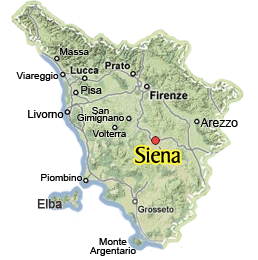
Siena is likely Italy's loveliest medieval city, and a trip worth making even if you are in Tuscany for just a few days. Siena's heart is its central piazza known as Il Campo, known worldwide for the famous Palio run here, a horse race run around the piazza two times every summer. Movie audiences worldwide can see Siena and the Palio in the James Bond movie, Quantum of Solace .
Siena is said to have been founded by Senius, son of Remus, one of the two legendary founders of Rome thus Siena's emblem is the she-wolf who suckled Remus and Romulus - you'll find many statues throughout the city. The city sits over three hills with its heart the huge piazza del Campo, where the Roman forum used to be. Rebuilt during the rule of the Council of Nine , a quasi-democratic group from 1287 to 1355, the nine sections of the fan-like brick pavement of the piazza represent the council and symbolizes the Madonna's cloak which shelters Siena.
The Campo is dominated by the red Palazzo Pubblico and its tower , Torre del Mangia . Along with the Duomo of Siena , the Palazzo Pubblico was also built during the same period of rule by the Council of Nine. The civic palace, built between 1297 and 1310, still houses the city's municipal offices much like Palazzo Vecchio in Florence. Its internal courtyard has entrances to the Torre del Mangia and to the Civic Museum. If you feel energetic, a climb up the over 500 steps will reward you with a wonderful view of Siena and its surroundings. The Museum, on the other hand, offers some of the greatest of Sienese paintings. The Sala del Concistoro houses one of Domenico Beccafumi's best works, ceiling frescoes of allegories on the virtues of Siena's medieval government. But it is the Sala del Mappamondo and the Sale della Pace that hold the palaces's highlights: Simone Martini's huge Maestà and Equestrian Portrait of Guidoriccio da Fogliano and Ambrogio Lorenzetti's Allegories of Good and Bad Government, once considered the most important cycle of secular paintings of the Middle Ages.
Related Sections
- Tourist Info
- Accommodation
You Might Also Like
- Destinations in Tuscany
- Val d'Orcia
- Crete Senesi
- San Gimignano
You'll love reading about...
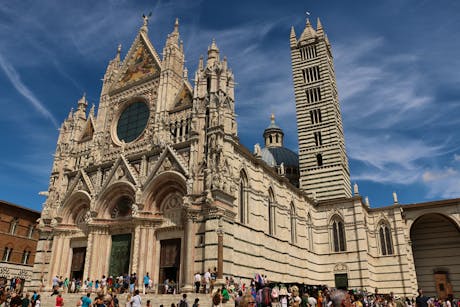
Siena's Cathedral - The Duomo in Siena
Siena's Gothic cathedral is full of treasures, including its marble pavement, Piccolomini library frescoes and incredibly ornate interiors. We highly recommend a visit into this wonder of Siena's past!
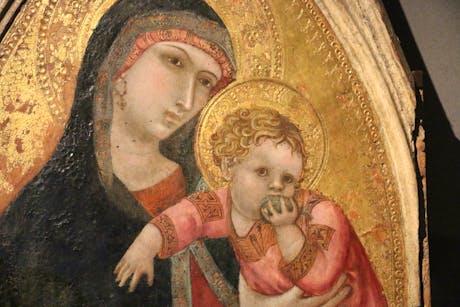
Discover the genius of Ambrogio Lorenzetti
In this marvelous 3 month exhibition spread across Siena, you'll get to discover the genius and beauty of the creations of Ambrogio Lorenzetti, an up to now largely unknown 14th century artist. Known for his "Good and Bad Government" fresco style in Palazzo Pubblico, there are more works to discover!
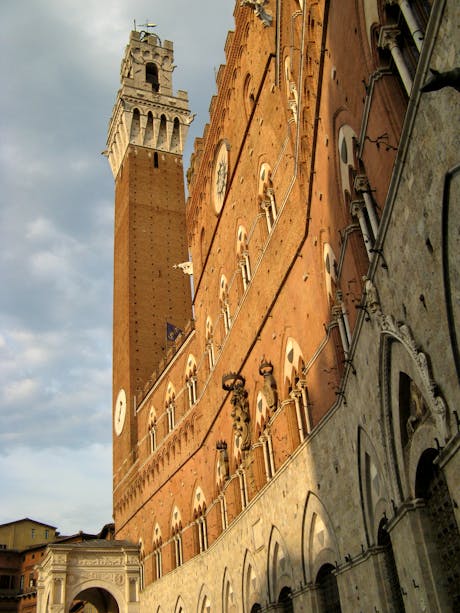
A day in Siena
Siena strikes your heart from the first time you visit it, making you fall in love. Located in the heart of Tuscany, the city is easy to reach and is suitable for a day trip - although 24 hours or less is really not enough to see all that it offers! Here are some must-see spots we recommend to see in Siena if you only have a day, but if you have the time, spread them out over 2 days.

All Siena Accommodations
List of all lodgings in Siena and in the surrounding area: Farmhouses, B&B, hotels and apartments with detailed description and high resolution photos. All holiday rentals offer direct contact with the owner or online booking.
Top Experiences in Siena
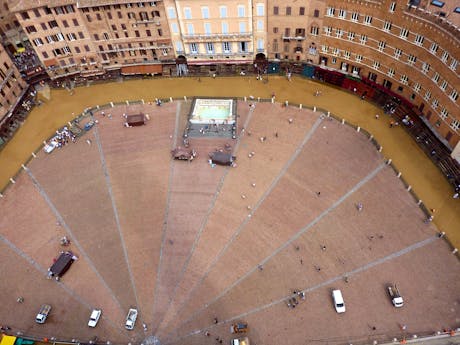
Piazza del Campo in Siena
Magical & enticing, even the most active visitor will want to take a few extra minutes to bask in the Tuscan sun, watch the shadow of the tower move across the square like the hand of a large clock and soak in the special atmosphere of Piazza del Campo.
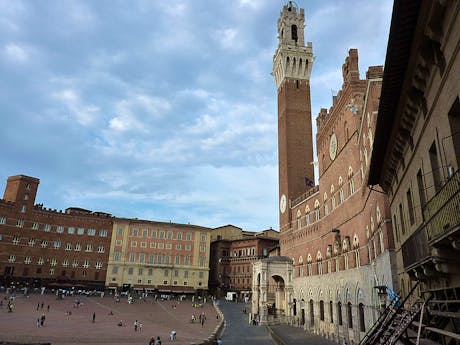
Visit the Torre del Mangia
Admire it from below or climb it to the top, this is one stop you don't want to miss in Siena. The iconic tower is a beacon for those who are in the city or travelling in the countryside.

Walks in Siena off the Tourist Track
Do you want to see more than Piazza del Campo and the Duomo in Siena? Here are ideas for a few walking trips which will take you around the beautiful city of Siena, offering great views of the city and surrounding countryside and taking to you a few other sights off the main tourist beaten path.
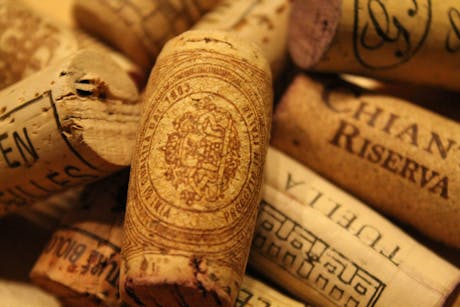
Top Wine Shops in Siena Historical Center
If you want to do some wine tasting in Siena historical center or simply buy a few bottles of Tuscan wines to bring home with you, you'll find here our recommendations about the city's top places to visit.
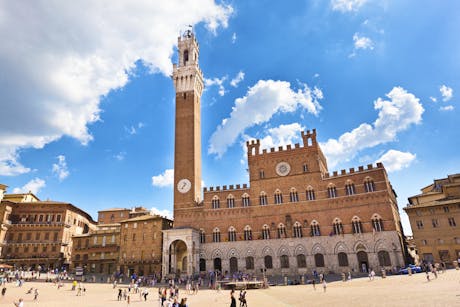
Siena Tourist Info
Useful information about Siena: how to get there with or without a car, where to park and what do to once you got there, included helpful tips for most enjoying this marvellous city.
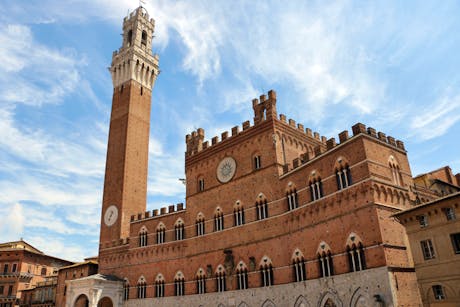
Tuscany in a Day: See Siena, San Gimignano and Chianti
One of the best ways to see the top sights out of Florence is to go on a group guided tour which will take you by bus to the top sights: this one takes you to Siena, San Gimignano and Chianti, with a last stop at a winery for a tour and wine tasting before heading back to Florence.

Insider Tips on Where to Eat in Siena
Quality, romantic, ambiance or just simple home cooking? Whatever you are looking for in a restaurant, it always helps to have a local’s point of view on what is available in Siena.
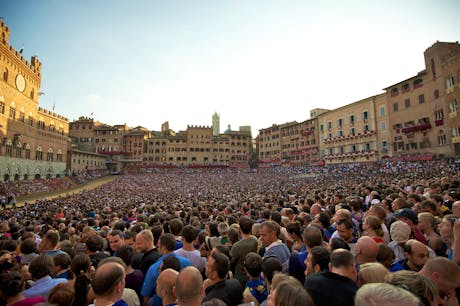
The Palio in Siena
The two annual races are just a part of what the Palio really means. This special event, which involves the entire city of Siena, starts at birth when each child is assigned a Contrada and becomes a lifelong journey of rivalry. Learn the more about the race.
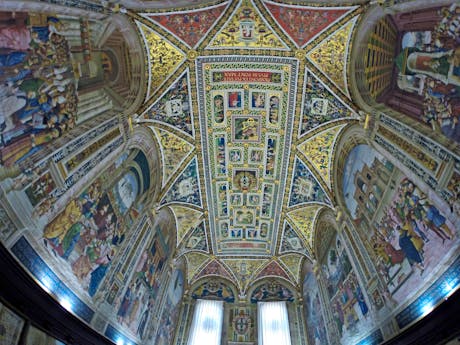
The Treasure Within: the Piccolomini Library inside the Duomo
The first time we went into the cathedral in Siena, we weren't expecting all the black and white. Then you step into the Piccolomini Library and discover where all the colors are! It is a stupendous discovery we highly recommend you include on your itinerary in Siena.
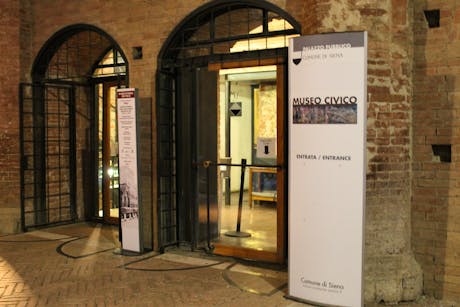
Palazzo Pubblico and the Museo Civico, the City museum of Siena
The Civic Museum of Siena conserves many interesting frescoes and is a must-see during your visit to the city.
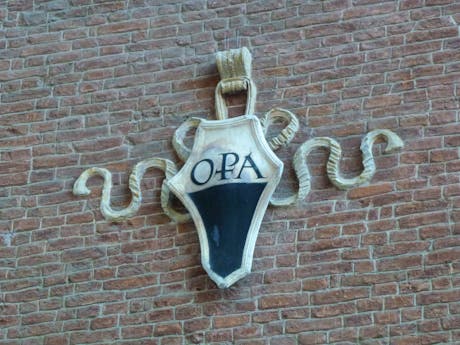
Visit the Baptistery, Crypt and Museum dell’Opera in Siena
Visit the Crypt, the Baptistery and the Museum dell’Opera to get a full history of the Cathedral in Siena and complete your visit to Siena's main religious sites.
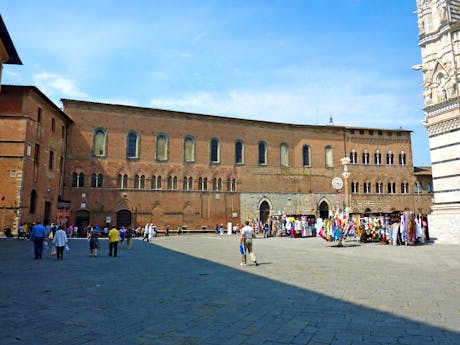
Museum Complex Santa Maria della Scala
The complex of Santa Maria della Scala stands in front of the Duomo, the ancient structure welcoming pilgrims to the city on their way to Rome. Today, it is a monumental building hosting artwork of extraordinary beauty of both artistic and historical importance.
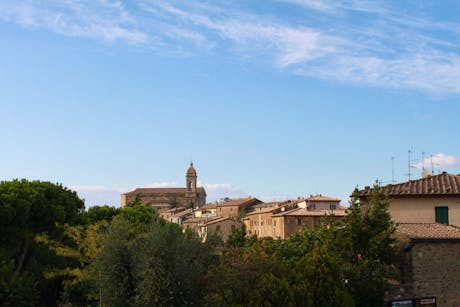
The Best Day trips from Siena (even without a car)
Are you looking for a day-trip out of Siena and are you travelling by public transport? Here we recommend you 12 great ideas and many useful info for discovering the marvellous surroundings of Siena and enjoying the authentic Tuscany.
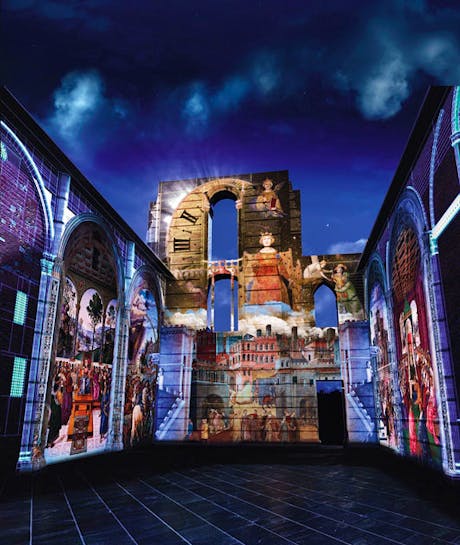
Divina Bellezza - The Divine Beauty of Siena
Stay in Siena this summer to enjoy the evening, completely NEW 3D video show on the side of the unfinished new cathedral next to the Duomo. A journey through centuries of history, traditions and values of the people of Siena that placed the medieval city at the center of the civilized world.
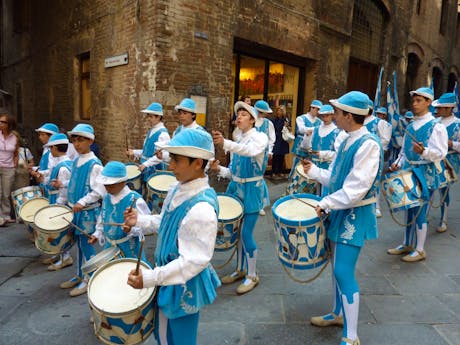
Tips for Enjoying the Palio
Are you going to Siena to see the Palio? Read these insider's tips on how to avoid the most common mistakes and enjoy this unique experience!
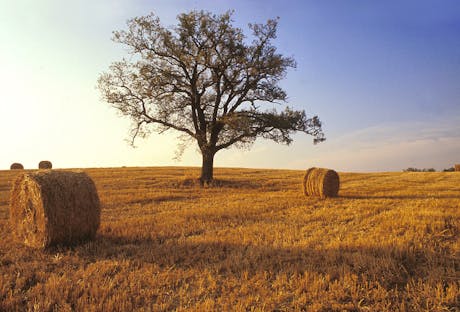
Val d'Orcia
The Val d’Orcia invites you to slow down and explore an itinerary filled with hilltop towns, outdoor hot springs, renowned vineyards and a lively cultural calendar with jazz concerts, sagras and outdoor adventures. Check out our guide to enjoy the valley to the fullest!


Visit Palazzo Piccolomini, beautiful Renaissance palace in Pienza
In Pienza , we highly recommend visiting Palazzo Piccolomini, the first example of Renaissance architecture . With its terrace and hanging garden, you'll enjoy an incredible view of the surrounding Val d'Orcia landscape.
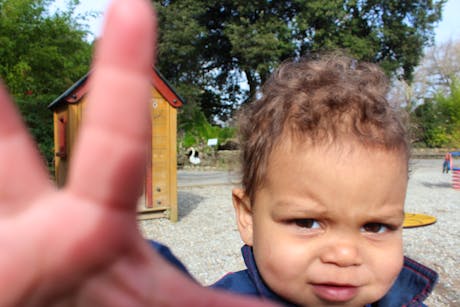
Visiting Siena with Children
Are you on holiday with your children? Here are ideas for places where the whole family can enjoy and take a break from the tourist attractions while you're in Siena.

Traditional Sweets and Pastries from Siena
For everyone with a sweet tooth, we propose a journey to taste the traditional sweets and pastries made in Siena, from cavallucci , ricciarelli , and panforte to other traditional desserts. We include a few recommendations on some of the best pastry shops in town where you can enjoy these treats.
Visit to the village of Radicondoli
Visit the village of Radicondoli in the area of metalliferous hills to enjoy the peaceful atmosphere of a typical Tuscan hilltop village and to know about geothermal energy of the area.
Books about Siena and the Palio
The best of the English narrative about Siena and the Palio tradition, for going deeper into the essence of this fascinating Tuscan city: no book however, can be compared to a real visit to the city, for seeing its artistic treasures in person!
More Articles
Our travel guides.
Travel Guide to Siena, Italy - HOME | CONTACT | SITEMAP
About siena..., ...your tourist guide to siena, welcome to about siena.
Dear visitor, Welcome to aboutsiena.com This is a non-commercial website that wants to give you most of interesting and useful information about one of the most beatiful city on the world: Siena . We just try to collect for you most of possible information about the history and the way of life of the "town".
Aboutsiena.com is your online travel guide to Siena - one of Italy's best preserved medieval towns, located in the heart of Tuscany.
Siena , built on three hills and surrounded by well preserved walls, is filled with fine examples of Gothic architecture and has one of the world's most unique piazzas - Piazza del Campo - (shaped like a shell with scalloped edges). Of course, the world-famous Palio of Siena is an important part of Sienese identity, history and culture.
To fully discover and appreciate all that Siena offers, one should visit the city for more than a just a few days. Siena makes an excellent base for other excursions in Tuscany , as it is not far from charming towns such as San Gimignano , Pienza , and towns world famous for wine , such as Montalcino and Montepulciano .
Visit Siena! Aboutsiena.com is filled with useful photos, maps , addresses and suggestions for making the most of your time, during your stay in Siena. You will find information on a range of interests such as Culture , Events , Museums , Food & Wine , Shopping and Language Study .
Discover the Terre di Siena ! We created a new section dedicated to the wonderful Terre di Siena : Chianti , Val d'Elsa , Val di Merse , Crete Senesi , Val d'Orcia , Monte Amiata and Val di Chiana .
Have you already visited them? Do you have some pictures? We would like to create a special photo gallery with photos sent by visitors. If you want, send us your pictures with a short description! We will publish them online and make you aware of it. Send everything to [email protected] !
Siena Tourist Information
Explore this attractive Tuscan town full of historic sights

Siena tourist information, hotel and travel guide
Siena is one of the most appealing towns in Tuscany, one of Italy’s most appealing regions. The well-conserved medieval streets and piazzas are home to the annual festival of the Palio, a neck-or-nothing horserace which takes place in Siena’s main square, the Campo. The town can be reached as a daytrip from Florence or Rome, but it’s also a good place to stay for several days, soak up the atmosphere, and visit the surrounding Tuscan countryside. The town is still sometimes known by its alternative English spelling of Sienna.
> Hotels and B&Bs in Siena
Siena tourist attractions and holiday information
Historical Siena is arranged around three radiating ridges of high ground, with green valleys enclosed within the old city walls. The town is divided into terzi , or thirds, and within each of these there are a number of the districts known as contrade (more about the contrade below). It’s easy to walk around the historic centre of Siena on foot, exploring as you go, but if you’re the organised type you may find it helpful to take the terzi one at a time.The Tourist Information Offices and museums supply leaflet guides to each one. The Terzo di Camollia, for example, contains the gigantic and shadowy Basilica di San Francesco, dating from the late 13th century; the rival Dominican church, the Basilica of San Domenico; the Sanctuary of St Catherine of Siena; the former Medici Fortress, which is now a pleasant and panoramic public park.
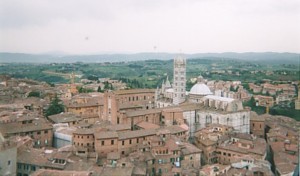
The first stop for tourists in Siena is Piazza del Campo (otherwise known simply as il Campo). This is the secular heart of Siena, a sloping amphitheatre of a square, lined with cafe tables and thronged with tourists, school parties and locals. The Campo is the dramatic setting for the Palio horserace. The piazza’s focal point is the Palazzo Pubblico , the public palace, which dates back to 1250 and is still the seat of the Municipality.
The Palazzo is also home to some fine frescoes, and makes a good beginning to your sightseeing tour. At the ticket office in the internal courtyard you can buy a range of tickets. These give access to differing numbers of Siena’s attractions, and some are valid for several days – a good way to save money, if you’re planning a longer stay. A combined ticket gives you access to the Museo Civico inside the Palazzo, and also to the tall belltower, the Torre del Mangia . The tower is an excellent way to view Siena, the views over the town and countryside are breathtaking and help the visitor understand the geography of the town. Be warned though, that the climb is also breathtaking. A limited number of people are allowed up at a time, and you’ll understand why when you see how narrow and poky the stairs are. The final climb up to the highest bell on its lofty framework is a nervewracking ladder – don’t even think of making the climb if you have a poor head for heights or are very unfit.
Moving on to the museum, highlights include superb frescoes by Simone Martini, whose Maestà religious scene is one of the oldest examples of Sienese painting and glows with colour and life. Even more fascinating is a fresco cycle by Ambrogio Lorenzetti (1319-1348), the Allegories of Good and Bad Government. In one series, a ‘good’ ruler presides over a prosperous city (Siena) and productive countryside, while the effects of bad government are shown to be dismal misery and urban deprivation. Also worth seeing are an exquisite rose-tree made of gold (a gift to Siena from a pope), and some beautiful carved choir stalls with religious illustrations (one fine example shows the dead clambering from their graves on Judgement Day).
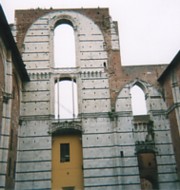
Heading uphill from the Campo, you arrive outside the monumental green-and-white-striped Duomo , Siena’s cathedral. Before the collapse of the city’s fortunes, Siena had ambitious plans to enlarge the edifice into the largest in the world. You can still see the facade and one side of the new cathedral, which would have incorporated the older building as a mere transept. Work was stopped, but the grandiose ambitions of the Sienese were preserved in the freestanding striped walls. The interior of the cathedral itself is ornate and decorated, lined with the heads of saints. The floor is composed of extremely fine inlaid marble scenes – some are covered to preserve them from wear, but others are usually exposed in roped-off sections. The Duomo is free to visit; although there is a small charge to visit the Piccolomini Library , (off to the left of the nave), where charming courtly scenes by Pinturicchio recount the life story of Sienese Pope Enea Silvio Piccolomini (Pius II). Adjacent to the Duomo, the Museo dell’Opera Metropolitana contains much of the original artwork from the cathedral, Sienese paintings, and the opportunity to view Siena from a vantage point on the unfinished new cathedral facade.
Siena history, the Palio and the contrade
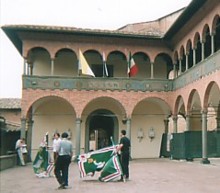
Early in its history, Siena was a Roman colony, and the later town retained pride in its past, with many statues and reminders of Romulus, Remus and the legendary she-wolf. In subsequent centuries, Siena became a prosperous and important medieval town, a rival to nearby Florence (which it famously defeated in battle in 1270). But the Black Death in 1348, and a decline in the town’s banking business changed Siena’s fortunes. A large proportion of the population died, and Siena’s star fell. Major building work on the vast cathedral extension was stopped, never to be restarted. Medieval Siena is so well-preserved because after the middle ages there was little development or industrialisation.
Perhaps because of its cultural and ecomonic stagnancy, perhaps because of a consequent need to maintain its own internal traditions, Siena has kept alive unusual and renowned traditions. In what is though to date back to a historic tribal system, the town is divided into 17 contrade , or districts. Each contrada has its own animal emblem (a caterpillar, a giraffe, a goose etc.) and its own strong identity. The rivalry between contrade is expressed twice every year in Siena’s biggest tourist attraction, the Palio. Horses representing the contrade (and blessed in their local churches) are raced perilously around the perimeter of Piazza del Campo; the whole event surrounded by an orgy of historical pageantry, flagwaving and cheering. The Palio takes place on 2nd July and 16th August; if you’re planning to visit then, it’s best to book your hotel well in advance.
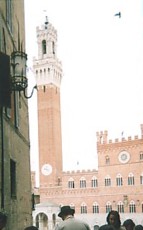
Siena travel information
Get to Siena
Siena is well-served by bus services, both from the surrounding towns and from more distant destinations, such as Rome. If you are travelling by train from the north of Italy, you should change at Florence for Siena; from Rome and the south, change trains at Chiusi.
Get around Siena
Siena’s railway station is a bus-ride from the centre of town – buy your 1-hour tickets first at the newsstand in the station (you must stamp them on the bus), then cross the piazza outside the station to the bus stop on the far side. In the middle of town, Piazza Gramsci is the central pick-up and drop-off point. The centre of Siena is most easily seen on foot – there are many steep slopes, so be prepared for some exercise.
Siena accommodation
Siena has a good selection of hotels and B&Bs in the historic centre, many of them located in historic buildings with a boutique atmosphere, or period charm. Palazzo Ravizza is one of the most special hotels in the area, with history, charm, a garden and views, and Hotel Athena is another good base inside the old town walls. Il Battistero is a stylish modern B&B overlooking the cathedral with excellent reviews. There are also more independent accommodation options, like the Residenza d’Epoca Palazzo Coli Bizzarrini , which offers apartments and suites in a 16th-century building.Travellers who are touring by car might consider staying in the green countryside outside the town, where there are some special places to stay including the Villa Scacciapensieri , a popular choice set in its own grounds, with a bus connection to the centre. > Siena hotels, B&Bs and apartments
Tuscany destinations
- Tuscany region
- Monte Argentario
- San Gimignano
- Tuscany hotels & B&Bs
Siena Tourist Information Office

Top ways to experience nearby attractions

Most Recent: Reviews ordered by most recent publish date in descending order.
Detailed Reviews: Reviews ordered by recency and descriptiveness of user-identified themes such as waiting time, length of visit, general tips, and location information.

Also popular with travellers
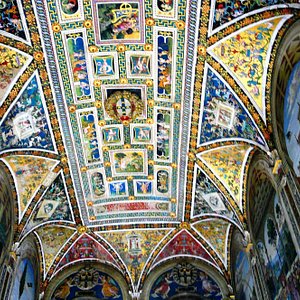
SIENA TOURIST INFORMATION OFFICE: All You Need to Know BEFORE You Go (with Photos)
Siena Travel Guide
Located in the heart of Tuscany, Siena is known for its architectural gems, bustling squares, and UNESCO World Heritage historic center. Throughout the centuries it became a prosperous town that now counts agriculture and tourism as its main sources of income. Today, Siena is home to some of the best things to do in Tuscany . Siena tourism is constantly evolving and there are many attractions to enjoy. You can browse the Siena Civic Museum, Duomo Cathedral, and National Gallery. Then, sip Tuscan wines in the piazza and climb Torre del Mangia for incredible views and photo opportunities. Each July and August , the town hosts its famous Palio horse race. Citizens compete against each other in their neighborhood colors. Afterwards, everyone gets together and the celebrations really begin! With so much to experience, our Siena Travel Guide will help you plan your Siena visit, starting with the highlights!
Table of Contents
How to Visit Siena

The most convenient and effortless way to visit Siena from other cities and towns within Italy is via a guided tour. Our San Gimignano, Chianti, Siena & Colle Val d’Elsa Tour – From Florence will pick you up from Florence in an air-conditioned and luxurious minibus, transporting you to see the highlights of the Tuscan region. From San Gimignano to Chianti, then onto Siena and Colle Val d’Elsa, we take care of all the logistics so you don’t need to worry about a thing. Plus, with expert guides escorting you throughout, you’ll gain a deeper appreciation for the sites you see.
It’s also possible to visit Siena by train, bus, car, or even bicycle. If you’re flying into Florence or Pisa airports, it takes an hour to drive from Florence and 1.5 hours from Pisa . The SITA bus company operates a regular service from Santa Maria Novella train station in Florence directly into Siena. There is also an hourly direct train from Florence and Pisa Centrale station, with one change at Empoli. It’s worth considering that cars may not enter Siena’s historical center unless you’re staying inside the city walls and have advance permission from your hotel.
For the more luxurious travelers, we offer a private transfer service between Florence Airport and Siena . If you’re flying into Florence Airport, our professional driver will be there waiting with a personalized sign, ready to escort you through the terminal and to your hotel in Siena. This is also the most comfortable and convenient option if you’re traveling from Siena city center to Florence Airport .
How to Get Around Siena

Siena is largely car-free. But if you plan to drive, you can gain a permit from your Siena hotel to enter the city walls with your vehicle or park on the outer fringes of the city. Buses operate outside the historic center to most neighborhoods and it takes approximately 25 minutes to walk from one side of Siena to the other. Another great way to see Siena is by bicycle or e-bike. There are over 200 cycle routes near the UNESCO World Heritage city, making bike rides easy and pleasant. Several stores offer daily bicycle rentals so you can take your time exploring the spectacular Tuscan countryside. Our Chianti E-Bike Tour from S iena makes that easy to do, topping off a scenic ride with a pastoral lunch and wine tasting. Check out the best tours from Siena for more ways to experience the region.
Siena Neighborhoods

The Torre neighborhood gets its name from Torre del Mangia, a 102-meter high bell tower located in the center of Siena. The area is chock-full of lively piazzas and museums, as well as quaint osterias serving delicious Tuscan cuisine. It’s the perfect base for first-time visitors in Siena, as it’s close to all the main tourist attractions. Highlights in Torre include Palazzo Pubblico – the Gothic-style town hall filled with art masterpieces and the architecturally impressive Loggia della Mercanzia.
Historic City Center
The city center is a superb place to stay in Siena. It offers easy access to Piazza del Duomo and Palazzo del Capitano, as well as a whole host of charming restaurants and gelaterias . It’s close to all the best things to do in Siena, making it easy to explore on foot, particularly for visitors with younger children!

Historic Aquila is located around Siena’s Duomo Cathedral and Santa Maria della Scala Museum. With abundant Renaissance art and frescoes to explore, it’s difficult to know where to begin! You can walk easily from here to Fortezza Medicea, a fortress built by Duke Cosimo to prevent the Sienese people from revolting against Florentine control. Then head to Fontebranda, an interesting 13th-century fountain flanked by Gothic arches and fed by aqueducts. This popular neighborhood is a place where locals and tourists can mingle. Moreover, there are some great pasticcerias and trattorias where you can sample typical Tuscan food. The Insider Siena City Tour will have a local expert on the town’s history show you all the highlights and the stories behind them.
Lupa is north of the historic center, near Porta Ovile and Palazzo Salimbeni. It’s a peaceful location popular with the Sienese people, so you can try out your Italian with the locals! It’s also only a few minutes walk to Giardini la Lizza, a verdant garden perfect for picnics and leisurely strolls. If you feel like stretching your legs, the historic center and Duomo are 10 minutes on foot.
Onda is a popular district for tourists in Siena. It’s home to several 3 and 4-star hotels and guest houses, interesting museums, and the botanical gardens of Siena University. In this neighborhood, you’ll discover lively bars, souvenir shops, and quaint trattorias where you can sample pasta and risotto just like mama used to make!
Food, Drink, & Nightlife

Every Siena Travel Guide will tell you that the culinary scene is spectacular, with some of the best food in Italy! Charming trattorias line the stunning piazzas. Hidden along the narrow alleyways, you’ll find osterias and wine bars with old brick ceilings and barrels for tables. These are the perfect places to tantalize your taste buds with fine Tuscan wines while sampling regional dishes. To ensure you’ve had a taste of all the best flavors in Siena, book our Siena food tour . Escorted by a local foodie, you’ll roam the charming streets, stopping along the way to taste a range of traditional dishes. Not only will you try dishes like pici cacio e pepe, and pappa senese, but you’ll also learn about their heritage from your expert guide.
For an extra special treat, venture outside the city walls where restaurants are located within ancient farm buildings and villas surrounded by beautiful gardens and stunning views of the Tuscan countryside. This Tuscan Cooking Class from Siena will teach you how to prepare local dishes in the stunning Chianti region. Meanwhile, the Brunello Wine Tasting Tour from Siena is perfect for wannabe wine experts to discover the region’s vintages.
Siena nightlife is rather low-key, mostly taking place in local wine caverns, piazzas, and cafes. But you can also listen to live bands in Piazza del Campo, watch theater performances, and dance until the early hours in one of the city’s nightclubs. In Siena, if you’re looking for leisure or intensity, you’re sure to find it!

Siena is packed with wonderful specialty shops and artisan workshops, making shopping one of the best things to do in Siena. Local specialties include hand-painted ceramics, quality clothing, shoes, and handbags. The main shopping street is Via Banchi di Sopra, and there is a modern mall near the train station. If local markets are more your thing, every Wednesday close to Piazza Gramsci there is a bustling outdoor market. On Fridays, Tuscan farmers head to Siena to sell olive oils, fresh bread, cheeses, local fruit, vegetables, and more. Perfect plan for a picnic lunch in the park!

Duomo of Siena
Gracing every Siena Travel Guide, you’re sure to find The Duomo of Siena or Siena Cathedral. The magnificent cathedral was designed in a blend of Italian Gothic, Romanesque, and Classical styles. It dominates the skyline above Piazza del Campo and is packed with artistic treasures from Michelangelo, Pisano, and Donatello. The building, constructed between 1215 and 1263, is decorated with columns of white and green/black marble stripes – the motif of Siena. Highlights of the cathedral and adjoining Museo dell’Opera include the storytelling mosaic pavement, the ceiling frescoes of the Piccolomini Library, and the beautiful rose window designed by Buoninsegna.
Piazza del Campo, Palazzo Pubblico, & Torre di Mangia
Piazza del Campo is Siena’s main square, lined with several notable buildings including Palazzo Pubblico – a 13th-century medieval palace that served as the seat of the Republican Government of Siena – and the Fountain of Gaia. You can take a guided tour of the palace, admiring opulent paintings from Italian artists. Or if you want the best views of Siena, climb to the top of Torre del Mangia. The historic tower offers incredible bird’s eye city views over Siena’s terracotta buildings and labyrinth streets, presenting abundant photo opportunities. These Siena tours are designed to highlight these fascinating historical relics and more.
Fortezza Medicea
Located in the western area of Siena is the Medici Fortress. The impressive structure was commissioned by Duke Cosimo during the 16th and 17th centuries, following the conquest of Siena by the Florentines. The duke built the fortress to prevent a second revolt by the citizens of Siena. Today, it is mostly used for festivals and concerts. It’s also home to a charming enoteca where you can sample local wines.
Accommodation

No Siena Travel Guide is complete without recommending where to lay your head at the end of the day! Hotels in Siena are a mix of romantic boutique townhouses, economic pensions, 5-star luxury hotels with floor-to-ceiling frescoes, and chic apartments and villas located outside the city walls. The most opulent hotel in Siena is Grand Hotel Continental , punctuated with fine art, period furnishings, and luxurious details. The hotel offers hot air ballooning excursions and truffle hunting for adventurous travelers. If that’s piqued your curiosity, read all about our other top picks for where to stay in Siena and its surrounding areas.
What to See Near Siena

Once you’ve finished visiting Siena Italy, venture to nearby treasures! If you’re planning a day trip from Siena , head for the ancient hilltop town of Monteriggioni. The medieval-throwback town boasts a multitude of historical sites including a castle and a handful of churches, with spectacular vistas over surrounding vineyards and olive groves. And if you wish to mix food, wine, and culture, Montepulciano is the place for you. It’s known for Vino Nobile de Montepulciano wine and specialties such as Pici – a thick pasta with tasty ragu sauce – and ricciarelli – almond biscuits with honey and vanilla. Nestled between the two towns you’ll find Rapolano Terme, sun-kissed thermal baths with mineral-rich waters where you can take an evening dip. Our Siena package tours like the Best of Tuscany 3 Day Tour – From Siena will give you the perfect dose of Siena, Tuscany, and its surrounding highlights.
Subscribe for insider tips to Italy Enter your email address to stay in-the-know of what's new in Italy. We promise to only send you guides to the best experiences. Email Keep Me Updated
Recommended

Related Articles

Best Things To Do in Tuscany

Ultimate Tuscany Travel Guide

Where to Stay in Tuscany

Tuscany And Florence Food And Wine Travel Guide

The Best Tours From Siena

How to Visit Italy on a Budget (Without Sacrificing the Experience)

Planning Your Italy Holidays? Your Guide to Dream Destinations and Tours in 2024

Italy in May 2024

Italy in April 2025

Italy in March 2025
Siena Tourist Information Office

Top ways to experience nearby attractions

Most Recent: Reviews ordered by most recent publish date in descending order.
Detailed Reviews: Reviews ordered by recency and descriptiveness of user-identified themes such as wait time, length of visit, general tips, and location information.

Also popular with travelers

Siena Tourist Information Office - All You Need to Know BEFORE You Go (2024)
Tourist information

- Share full article

Stephen Hiltner/The New York Times
The sculpted facade of a 2,000-year-old tomb glows in the late-afternoon sun at Hegra, a UNESCO World Heritage site.
Crowds of Muslim pilgrims gather outside the Prophet’s Mosque in Medina.
Camels march through the desert on the outskirts of the Empty Quarter, the world’s largest sand sea.
For many years these Saudi Arabian scenes, including the lively open-air markets in Jeddah, were off limits to most travelers.
But not anymore. As it undergoes a profound transformation, Saudi Arabia is spending lavishly to lure tourists with its luxe new resorts ...
... its rich cultural heritage ...
... and its sublime natural beauty.
Can the Saudi government persuade would-be visitors to look past — or reconsider — its longstanding associations with religious extremism, ultraconservatism and human rights abuses?
Will the kingdom’s $800 billion bet on tourism pay off?
Supported by
Surprising, Unsettling, Surreal: Roaming Through Saudi Arabia
To witness the kingdom’s profound transformation and assess its ambitious tourism projects, a Times journalist spent a month on the road there. Here’s what he saw.

By Stephen Hiltner
An editor and photojournalist for the Travel section, Stephen Hiltner drove 5,200 miles and visited all 13 of Saudi Arabia’s provinces while reporting and shooting this story.
Wandering alone along the southern fringes of Saudi Arabia’s mountainous Asir Province, some eight miles from the Yemeni border, in a nondescript town with a prominent sculpture of a rifle balanced on an ornately painted plinth, I met a man, Nawab Khan, who was building a palace out of mud.
Actually, he was rebuilding the structure, restoring it. And when I came across him, he hadn’t yet begun his work for the day; he was seated on the side of the road beneath its red-and-white windows — cross-legged, on a rug, leaning over a pot of tea and a bowl of dates.
Two weeks earlier, on the far side of the country, a fellow traveler had pointed at a map and described the crumbling buildings here, in Dhahran al-Janub, arranged in a colorful open-air museum. Finding myself nearby, I’d detoured to have a look — and there was Mr. Khan, at first looking at me curiously and then waving me over to join him. Sensing my interest in the cluster of irregular towers, he stood up, produced a large key ring and began opening a series of padlocks. When he vanished through a doorway, I followed him into a shadowy stairwell.
This, of course, was my mother’s worst nightmare: Traveling solo, I’d been coaxed by a stranger into an unlit building in a remote Saudi village, within a volatile border area that the U.S. Department of State advises Americans to stay away from .
By now, though, more than halfway through a 5,200-mile road trip, I trusted Mr. Khan’s enthusiasm as a genuine expression of pride, not a ploy. All across Saudi Arabia, I’d seen countless projects being built, from simple museums to high-end resorts. These were the early fruits of an $800 billion investment in the travel sector, itself part of a much larger effort, Vision 2030 , to remake the kingdom and reduce its economic dependence on oil.
But I’d begun to see the building projects as something else, too: the striving of a country — long shrouded to most Westerners — to be seen, reconsidered, accepted. And with its doors suddenly flung open and the pandemic behind us, visitors like me were finally beginning to witness this new Saudi Arabia, much to Mr. Khan’s and all the other builders’ delight.

Few countries present as complicated a prospect for travelers as Saudi Arabia.
Long associated with Islamic extremism, human rights abuses and the oppression of women, the kingdom has made strides in recent years to refashion its society and its reputation abroad.
The infamous religious police, which upheld codes of conduct based on an ultraconservative interpretation of Islam, were stripped of their power. Public concerts, once banned, are now ubiquitous. Women have been granted new rights — including the freedom to drive and to travel without permission from a male guardian — and are no longer required to wear floor-length robes in public or to cover their hair.
These changes are part of a broad set of strategies to diversify the kingdom’s economy, elevate its status in the world and soften its image — the last of which is a tall order for a government that has killed a newspaper columnist , kidnapped and tortured dissidents , precipitated a humanitarian crisis in Yemen and imprisoned people for supporting gay rights , among a number of other recent abuses .
Central to the transformations led by 38-year-old Crown Prince Mohammed bin Salman, the kingdom’s de facto ruler, is a major push for international visitors. It represents a sea change in a country that, until 2019, issued no nonreligious tourist visas and instead catered almost exclusively to Muslim pilgrims visiting Mecca and Medina, Islam’s two holiest cities. In February, by contrast, my tourist e-visa was approved online in minutes.
Saudi Arabia has already transformed one of its premier destinations — Al-Ula, with its UNESCO-listed Nabatean tombs — from a neglected collection of archaeological sites into a lavish retreat with a bevy of activities on offer, including guided tours, wellness festivals, design exhibitions and hot air balloon rides.
Another project will create a vast array of luxury resorts on or near the Red Sea.
Still more projects include the development of Diriyah , the birthplace of the first Saudi state; the preservation and development of the coastal city of Jeddah ; an offshore theme park called the Rig ; and Neom , the futuristic city that has garnered the lion’s share of attention.
All told, the country is hoping to draw 70 million international tourists per year by 2030, with tourism contributing 10 percent of its gross domestic product. (In 2023, the country logged 27 million international tourists, according to government figures , with tourism contributing about 4 percent of G.D.P.)

At-Turaif, a UNESCO World Heritage site, was the birthplace of the kingdom of Saudi Arabia. It is now the centerpiece of the $63 billion Diriyah project, a new center of culture just outside Riyadh.
Nujuma, a Ritz-Carlton Reserve on a remote island in the Red Sea, opened in late May. (A one-bedroom villa costs about $2,500 per night, excluding taxes and fees.) It is one of 50 properties scheduled to open in the area by 2030.
The preservation and development of Jeddah, a coastal city famous for its historic district built largely from blocks of coral, comes with a price tag of some $20 billion.
Al-Ula is a cornerstone of Saudi Arabia’s tourism ambitions. Part of the city’s Old Town, long crumbling in neglect, has now been painstakingly restored.
To get a sense of these projects and the changes unfolding in Saudi society, I spent a month exploring the kingdom by car. I traveled alone, without a fixer, driver or translator. Per New York Times ethics guidelines, I declined the government’s many offers of discounts and complimentary services.
Much of the time I felt I’d been tossed the keys to the kingdom. But there were moments, too, when I faced a more complicated reality, one epitomized by a road sign that forced me to abruptly exit the highway some 15 miles from the center of Mecca. “Obligatory for Non Muslims,” it read, pointing to the offramp.
To me, the sign broadcast the lines being drawn to compartmentalize the country, which is now marketing itself to two sets of travelers with increasingly divergent — and sometimes contradictory — expectations: luxury tourists at ease with bikinis and cocktails, and pilgrims prepared for modesty and strict religious adherence. It’s hard to know whether the kingdom can satisfy both without antagonizing either.
My trip began in Jeddah, where, after spending two days exploring its historic district, I rented a car and drove eight hours north to Al-Ula, a benchmark for the new Saudi tourism initiatives.

Saudi Arabia
Reporter’s route
Dhahran al-Janub

Wadi al-Disah
Red Sea Resort
The name Al-Ula refers to both a small city and a broader region packed with attractions: Hegra , the kingdom’s first UNESCO World Heritage site and its biggest archaeological draw, is a 30-minute drive north of Old Town, a maze of crumbling mud-brick buildings now partly restored. Between the two, and fanning out to the east and west, are several other archaeological sites, as well as a smattering of resorts, event spaces and adventure outfitters. Farther northeast, beyond Hegra, is the Sharaan Nature Reserve , a vast protected zone used for conservation efforts.
My first priority during my five-day stay in Al-Ula was a visit to Hegra.
Like Petra , its better-known counterpart in Jordan, Hegra was built by the Nabateans, an ancient people who flourished 2,000 years ago. The site contains more than 100 tombs that were carved from solid rock, their entrances adorned with embellishments. Most impressive among them, set apart and standing some 70 feet tall, is a tomb colloquially called the Lonely Castle.
Not long ago, visitors could hire private guides and wander the area on foot, climbing in and out of — and no doubt damaging — the many tombs. Not anymore: I boarded an air-conditioned tour bus and zipped past most of them, stopping at just four locations.
At the penultimate stop, we exited the bus and trudged several hundred feet along a sandy path to the front of the Lonely Castle. Even in the late afternoon, the heat was stifling. I craned my neck to take in the details of the sculpted facade, which emerged like a mirage from one side of a massive boulder: its four pilasters, the rough chisel marks near the bottom, its characteristic five-stepped crown. Ten minutes evaporated, and I turned to find my group being shepherded back onto the bus. I jogged through the sand to catch up.
A few miles north of Hegra, I hopped in the back of a Toyota Land Cruiser — accompanied by an Italian graduate student and his mother — for a drive through the sandy expanse of the Sharaan Nature Reserve.
The scenery was sublime: Slipping through a narrow slot canyon, we emerged into a vast, open desert plain, then settled into a wide valley enclosed by an amphitheater of cliffs. Occasionally our guide stopped and led us on short hikes to petroglyphs, some pockmarked by bullet holes, or to lush fields of wildflowers, where he plucked edible greens and invited us to sample their lemony tang.
Gabriele Morelli, the graduate student, had first come to Al-Ula a few years ago — a different era, he said, given how quickly the place had transformed. He described a version that no longer exists, rife with cheap accommodation, lax rules and a free-for-all sensibility.
Some of the changes, of course, have been necessary to protect delicate ecosystems and archaeological sites from ever-growing crowds. But several people I met in Al-Ula — Saudis and foreigners alike — quietly lamented the extent of the high-end development and the steady erosion of affordability. Many of the new offerings, like the Banyan Tree resort, they pointed out, are luxury destinations that cater to wealthy travelers.
These hushed criticisms were among my early lessons on how difficult it can be to gauge the way Saudis feel about the pace and the pervasiveness of the transformations reshaping their society.
I got a taste of Al-Ula’s exclusivity — and of the uncanniness that occasionally surfaced throughout my trip — at a Lauryn Hill concert in an event space called Maraya . To reach the hall, I passed through a security gate, where an attendant scanned my e-ticket and directed me two miles up a winding road into the heart of the Ashar Valley, home to several high-end restaurants and resorts.
Rounding the final bend, I felt as if I’d stumbled into a computer-generated image: Ant-size humans were dwarfed by a reflective structure that both asserted itself and blended into the landscape. Inside, waiters served hors d’oeuvres and brightly colored mocktails to a chic young crowd.
The surreality peaked when, midway through the show, I left my plush seat to join some concertgoers near the stage — only to turn and see John Bolton, former President Donald J. Trump’s national security adviser, seated in the front row.
Where else, I wondered, could I attend a rap concert in the middle of the desert with a longtime fixture of the Republican Party — amid a crowd that cheered when Ms. Hill mentioned Palestine — but this strange new corner of Saudi Arabia?

The mirrored facade at Maraya, a vast event space in Al-Ula, warps and reflects the surrounding desert landscape.
The building is in some ways a precursor to the kingdom’s most ambitious architectural design: the project at Neom called the Line, a 106-mile linear city that will also feature a mirrored surface.
Lauryn Hill performing in front of a large crowd at Maraya.
After Al-Ula, I drove to another of the kingdom’s extravagant schemes: the Red Sea project, billed as the “world’s most ambitious regenerative tourism destination.” After weaving through a morass of construction-related traffic, I boarded a yacht — alongside a merry band of Saudi influencers — and was piloted some 15 miles to a remote island, where I disembarked in a world of unqualified opulence at the St. Regis Red Sea Resort .
I was chauffeured around in an electric golf cart — past 43 beachside “dune” villas and onto two long boardwalks that connect the rest of the resort to 47 “coral” villas, built on stilts over shallow turquoise water. Along the way, I listened to Lucas Julien-Vauzelle, an executive assistant manager, wax poetic about sustainability. “We take it to the next level,” he said, before rattling off a list of facts and figures: 100 percent renewable energy, a solar-powered 5G network , plans to enhance biologically diverse habitats.
By 2030, he said, the Red Sea project will offer 50 hotels across its island and inland sites. Citing the Maldives, he mentioned the kingdom’s plans to claim a share of the same high-end market.
Another prediction came by way of Keith Thornton, the director of restaurants, who said he expects the resort to legally serve alcohol by the end of the year. (While a liquor store for non-Muslim diplomats recently opened in Riyadh, the Saudi government has made no indication that it plans to reconsider its broader prohibition of alcohol.)
The hotel was undeniably impressive. But there’s an inescapable irony to a lavish resort built at unfathomable expense in the middle of the sea — with guests ferried out by chartered boat and seaplane — that flaunts its aspirations for sustainability.
Toward the end of my several-hour visit, I learned that every piece of vegetation, including 646 palm trees, had been transplanted from an off-site nursery. Later, reviewing historical satellite images, I found visual evidence that the island — described to me as pristine — had been dramatically fortified and, in the process, largely remade. Its footprint had also been significantly altered. It was, in a sense, an artificial island built where a smaller natural island once stood.
Something else struck me, too: The place was nearly empty, save for the staff and the Saudi influencers. Granted, the resort had just opened the month before — but the same was true at the nearby Six Senses Southern Dunes , an inland Red Sea resort that opened in November. Fredrik Blomqvist, the general manager there, told me that its isolated location in a serene expanse of desert — part of its appeal — also presented a challenge in drawing customers. “The biggest thing,” he said, “is to get the message out that the country is open.”
Since the country began issuing tourist visas, influencers have been documenting their experiences in places like Jeddah and Al-Ula, their trips often paid for by the Saudi government. Their breezy content contributes to the impression that the kingdom is awaiting discovery by foreign visitors with out-of-date prejudices. To an extent, for a certain segment of tourists, that’s true.
For many travelers, though, the depiction of the kingdom as an uncomplicated getaway could be dangerously misleading.
Speech in Saudi Arabia is strictly limited; dissent is not tolerated — nor is the open practice of any religion other than the government’s interpretation of Islam. In its travel advisory , the U.S. Department of State warns that “social media commentary — including past comments — which Saudi authorities may deem critical, offensive, or disruptive to public order, could lead to arrest.” Punishment for Saudi nationals has been far worse: In 2023, a retired teacher was sentenced to death after he criticized the ruling family via anonymous accounts. As of late 2023, he remained in prison.
Other restrictions are harder to parse. L.G.B.T.Q. travelers are officially welcome in the kingdom but face a conundrum: They might face arrest or other criminal penalties for openly expressing their sexual orientation or gender identity. As recently as 2021, an independent U.S. federal agency included Saudi Arabia on a list of countries where same-sex relationships are punishable by death , noting that “the government has not sought this penalty in recent years.”
When asked how he would convince a same-sex couple that it was safe to visit, Jerry Inzerillo, a native New Yorker and the group chief executive of Diriyah, said: “We don’t ask you any questions when you come into the country or when you leave.”
“Maybe that’s not conclusive enough,” he added, “but a lot of people have come.”
Female travelers might also face difficulties, since advancements in women’s rights are not equally distributed throughout the kingdom.
The changes were more visible in big cities and tourist centers. Ghydda Tariq, an assistant marketing manager in Al-Ula, described how new professional opportunities had emerged for her in recent years. Maysoon, a young woman I met in Jeddah, made extra money by occasionally driving for Uber. Haneen Alqadi, an employee at the St. Regis Red Sea, described how women there are free to wear bikinis without fear of repercussions.
Outside such places, though, I sometimes went for days without seeing more than a handful of women, invariably wearing niqabs, let alone seeing them engaged in public life or tourism. My photographs reflect that imbalance.
As an easily identifiable Western man, I moved through the country with an array of advantages: the kindness and cheery curiosity of strangers, the ease of passage at military checkpoints, and the freedom to interact with a male-dominated society at markets, museums, parks, restaurants, cafes. Not all travelers could expect the same treatment.
Roaming in the far north and south, I often found the earlier version of the kingdom — with lax rules and less development — that had been described to me in Al-Ula.
I trekked to the northern city of Sakaka to see an archaeological site promoted as the Stonehenge of Saudi Arabia: a set of monoliths called the Rajajil Columns thought to have been erected some 6,000 years ago but about which little is definitively known.
My heart sank when I pulled into the parking lot after a five-hour drive and found the columns blocked by a tall fence. Approaching on foot, though, I noticed that a section of the fence had been peeled back and that visitors were wandering freely among the stones, which protruded from the earth like isolated clusters of crooked teeth. I joined the small crowd, if hesitatingly, and was surprised to find no footpaths, nor anything to keep us a safe distance from the columns. In the end I wondered if our access had been officially approved or informally arranged.
My travel experiences were sometimes awkward in other ways, too.
Standing just outside the grounds of the central mosque in Medina, where the Prophet Muhammad is buried, I was detained by a stern member of the Special Forces. (Even after 2019, non-Muslim tourists remained barred from Mecca and Medina, Islam’s two holiest cities. The ban was relaxed in parts of Medina in 2021.)
The guard interrogated me and, after calling a colleague to confer, demanded that I leave the area. “Go,” he said threateningly. Another traveler who witnessed the encounter scurried away to avoid a similar fate.
The unsettling exchange cast a pall over my time in the city, which few non-Muslims have seen. As far as I knew, I’d abided by the rules by staying outside the grounds of the Prophet’s Mosque — a boundary line that I’d confirmed with tourism officials beforehand.

Peering through the perimeter fence — the boundary line for non-Muslims — at the Prophet’s Mosque in Medina.
The Mosque of Al-Ghamamah, one of the oldest in the holy city.
A sprawling maze of ramshackle residential buildings sits less than a mile from the Prophet’s Mosque.
A guide speaking to a group of visitors near the Hejaz Railway Museum, visible in the distance. (The museum was closed for renovations at the time.)
A group of young men, most of whose families emigrated from Sudan, playing soccer in a field just outside the center of Medina.
More than anything, family and friends wanted to know if I felt safe on my trip — and I did, almost without exception. Petty crime in Saudi Arabia is exceedingly rare. And while parts of the country are under a Level 4 “Do Not Travel” advisory , even my rambling itinerary was approved by a security expert.
Instead of fearing for my safety, I was often preoccupied with how I’d fairly portray a place that elicited such a range of conflicting emotions: joy and distress, excitement and apprehension, sincerity and doubt. So much lay hidden from public view — like the collective anguish over the war raging in Gaza . And so little was easy to categorize, in part because the warmth of everyday Saudis was strikingly at odds with the ruthlessness of their authoritarian government.
In Riyadh, a young man warned me not to speak openly with strangers. “People get arrested here for a tweet ,” he said. “Can you imagine?”
I could, actually. The Saudi columnist Jamal Khashoggi had chronicled his government’s increasingly draconian responses to criticism. “Repression and intimidation are not — and never should be — the acceptable companions of reform,” he wrote in The Washington Post in 2018, just months before he was killed and dismembered at his country’s consulate in Istanbul.

Were we to travel only where we feel comfortable and unchallenged, we’d all be poorer for it. But the question of whether to travel to Saudi Arabia is thornier than that.
It’s easy to see one response, “No,” as yielding to closed-mindedness at the expense of ordinary people — like the kindly vendor Abdullah, who served me local honey at his shop in the southern mountains.
But it’s easy, too, to see “Yes” as an affirmation that might makes right, that amusement outweighs morality, that princely wealth can wipe a stained slate clean.

Sunrise over the mountainous village of Fayfa, some six miles from the Yemeni border.
Abdullah Ghaleb Zaid, a honey vendor, at his shop atop a mountain pass near the southern city of Abha.
Sunset near Jabal Soudah, the kingdom’s highest peak.
Ten days into my trip, I ventured to Wadi al-Disah, a steep-walled valley where I’d booked a tent at a campsite I found on Airbnb. For an additional 300 riyals ($80), my host, Faisal, led me on a four-wheel-drive tour, departing the paved road and weaving through a path along the bed of an ephemeral river. Continually jolted by the uneven terrain, we eased past thick reeds, lofty palms and small bands of visitors who’d nestled into clearings.
As we left, I met a group of young men gathered for a picnic, their sandals scattered around a carpet on which they were preparing their dinner. Delighted to meet an American with a camera, they asked if I’d take a group portrait, then exchanged information with me so I could send them a copy — a scenario by then so familiar that I hardly thought anything of it.
A full day later, some 200 miles away, I was cruising along a lonely highway near the Jordanian border when a Land Cruiser blew past me at an astonishing speed. I felt my compact car rock from its turbulence — and then I watched with a twinge of dread as the car abruptly braked, slowing hard in the left lane until our front ends were aligned. It held steady there.
For a moment I stared straight ahead, hoping to avoid a confrontation. When I finally turned to look, I saw a group of boys grinning wildly and waving through an open window. Then I realized: Improbably, it was three of the young men I’d met the day before. Somehow we’d all followed the same route. And somehow, in the split second it took them to fly past, they’d recognized me. I lifted my camera from the passenger seat and snapped a photograph.
The picture shows three young Saudis on a precipice: endearing, erratic, captivating. I have a sense of where they came from but no certainty about where they’re going. Two are flashing peace signs, and none appears to be wearing a seatbelt. No one is watching the road as their car drifts out of its lane, careening a little recklessly into a hopeful and uncertain future.
Stephen Hiltner’s recent work includes a photo essay about his childhood in Budapest , an examination of A.I.-generated guidebooks and an investigation into the deaths of Russian soldiers in Ukraine . You can follow his travels on Instagram .
Got a question about this story? Drop a note in the comments section. Got a tip? Send him an email .
Stephen Hiltner is an editor, writer and photographer for the Travel section of The Times. More about Stephen Hiltner
Open Up Your World
Considering a trip, or just some armchair traveling here are some ideas..
52 Places: Why do we travel? For food, culture, adventure, natural beauty? Our 2024 list has all those elements, and more .
The Alaska Highway: On an epic road trip, a family plots a course from Alaska to the Lower 48, passing through some of Canada’s most spectacular scenery .
Minorca: Spend 36 hours on this slow-paced Spanish island , which offers a quieter and wilder retreat than its more touristy neighbors.
Japan: A new high-speed train stop unlocks Kaga, a destination for hot springs, nourishing food and traditional crafts , as an easy-to-reach getaway from Tokyo.
London: The Victoria and Albert Museum is a treasure trove of art and design. Here’s one besotted visitor’s plan for taking it all in .
Advertisement

COMMENTS
Siena's artistic and natural heritage is enriched with tasty aromas and flavours: cured meats, pici (thick spaghetti), meats and fine wines. Discover typical Sienese dishes to try during your stay in the city and what food and wine souvenirs to buy in the shops in old town. The trattorias will know how to delight you with ribollita (a bread ...
The involvement of the organization in the promotion of tourism in the province of Siena is also proven by a special product it makes available: the so-called Terre di Siena Card. This is a useful tourist tool that allows visitors to keep posted with latest information related to local tourism and enjoy substantial advantages (discounts to ...
Informed travel is the best way to take advantage of a destination and experience it fully as an aware visitor rather than an impromptu tourist.To enable you to immerse yourself in Siena and discover it at its best, in this section we have gathered useful information, historical background on the city, details on weather, surroundings and experiences to enjoy in Siena area.
Information and tourist reception - Piazza Il Campo, 7 - 0577 292222. Lost and Found Office - Curtatone Avenue, 29 (drop-off at gate C 9 entrance to municipal stadium) - 0577 2925. URP (Public Relations Office) - of the City of Siena - 800 292292. Si.ge.ri.co (parking and lift operator) - Toll-free number 800 562 565 - Phone 0577 228711.
Piazza del Campo, 7-53100 Siena. Phone 800 292 292 Tel. 0577 292230 292340-292334. Fax. 0577 292494 - [email protected]. Azienda Ospedaliera Universitaria Senese Policlino "Santa Maria alle Scotte". Emergency Room 0577 585807. info Office 0577 585689 - 0577 585137. Siena. Tourist information. The city of Siena is rich in tourist ...
Discover the beauty and charm of Siena, one of the most fascinating medieval towns in Tuscany. Visit Siena Official offers you the best tips and deals.
Some of Tuscany's most beautiful areas lie immediately around Siena.Just think of San Gimignano, which is an easy bus ride away: the city whose towers have earned it the name of the "medieval Manhattan".. You should not miss a visit to the castle of Monteriggioni, which Dante described in his Divine Comedy.In Inferno 31, the great poet compares the outlines of the giants in the ninth circle of ...
Siena travel guide Up-to-date information on what to see and do in Siena The Siena travel kit contains information to help you plan your visit to one of Italy's most beloved destinations. The city of the Palio boasts an enchanting medieval atmosphere that pervades every Contrada with its palaces, noble residences, museums, religious buildings, gardens,
The Duomo Complex. Santa Maria Assunta is the Cathedral of Siena, probably one of the most beautiful in all Italy. In the middle of the 12th century, works begin to transform a small church of the 9th Century into a large Romanesque - Gothic Cathedral dominated by a colour dichotomy of black and white - in reference to the colours of Siena's ...
Tourist Info Siena:Suggestions on Siena. Here we offer a collection of useful information about Siena. Hopefully you'll find answers to the majority of your questions. You'll find location of the parking lots around the historical center, details on how to move around and how to get to Siena, also without a car.
Siena tourist information office Piazza del Campo 56 tel. +39-0577-280-551 Terresiena.it Also useful: Museisenesi.org Comune.siena.it Sienaonline.it (private) Sienafree.it (private) Useful links. TK Train tix. Italy map » View the interactive Italy map. Trip plans.
Siena, A Step back to Medieval Tuscany. Siena is likely Italy's loveliest medieval city, and a trip worth making even if you are in Tuscany for just a few days. Siena's heart is its central piazza known as Il Campo, known worldwide for the famous Palio run here, a horse race run around the piazza two times every summer.
About Siena.....your Tourist Guide to Siena. Home Siena Guide. Find all Information about the city of Siena! Languages. ... Tourist Information Office Address: piazza Duomo, 1 Opening Times Winter (11/11-21/03): 8:30-13:00 | 15:00-19:00, closed on Saturday afternoon, Sunday and holidays.
The Siena area (known as the "Terre di Siena" in Italian) is the scenic countryside surrounding Siena, which continues to entice travellers with its beauty just like the times of the Grand Tour.This land welcomes with the charm of the past, ready to wow with the wonders of wooded and clay valleys, distinctive rows of vineyards, rolling hills dotted with olive trees and centuries-old food ...
Aboutsiena.com is your online travel guide to Siena - one of Italy's best preserved medieval towns, located in the heart of Tuscany. Siena , built on three hills and surrounded by well preserved walls, is filled with fine examples of Gothic architecture and has one of the world's most unique piazzas - Piazza del Campo - (shaped like a shell ...
Siena tourist information, hotel and travel guide. Siena is one of the most appealing towns in Tuscany, one of Italy's most appealing regions. The well-conserved medieval streets and piazzas are home to the annual festival of the Palio, a neck-or-nothing horserace which takes place in Siena's main square, the Campo.
We encountered two Tourist Information Centres in Siena. By far the largest and better resourced was the Office in the Piazza del Campo. This Tourist Information Centre was located in the Piazza del Campo, about 50 metres up the slight rise in the Piazza on the same side as the Municipal City Hall buildings (on the right as you face the Town Hall).
Find out here everything you need to know about visiting Tuscany: attractions, ideas, itineraries, events, deals, recipes and tours. | Visit Tuscany
Siena hardly needs an introduction; it is one of Tuscany's great art cities and a gem of central Italy. It enjoys a nearly perfect position for tourism, smack in the heart of Tuscany, the most beloved region in the country, and lies between Florence and Arezzo, the two celebrated cities of the Renaissance.It also occupies a piece of picturesque landscape amidst the rolling hills and vine-lined ...
Siena Travel Guide. Located in the heart of Tuscany, Siena is known for its architectural gems, bustling squares, and UNESCO World Heritage historic center. Throughout the centuries it became a prosperous town that now counts agriculture and tourism as its main sources of income. Today, Siena is home to some of the best things to do in Tuscany.
We encountered two Tourist Information Centres in Siena. By far the largest and better resourced was the Office in the Piazza del Campo. This Tourist Information Centre was located in the Piazza del Campo, about 50 metres up the slight rise in the Piazza on the same side as the Municipal City Hall buildings (on the right as you face the Town Hall).
Torrita di Siena - Tourist Information Office Via Ottavio Maestri, 53049 Torrita di Siena See details >> Info Point Sinalunga - Tourist Information Office Piazza della Repubblica, 53048 Sinalunga See details >> Info Point Trequanda - Tourist Information Office Via Roma, 53020 Trequanda
An editor and photojournalist for the Travel section, Stephen Hiltner drove 5,200 miles and visited all 13 of Saudi Arabia's provinces while reporting and shooting this story. June 5, 2024 ...